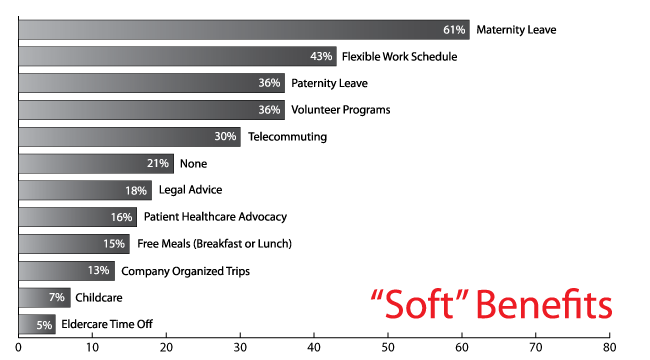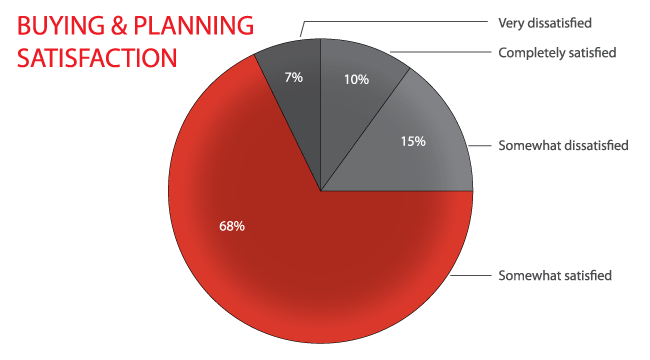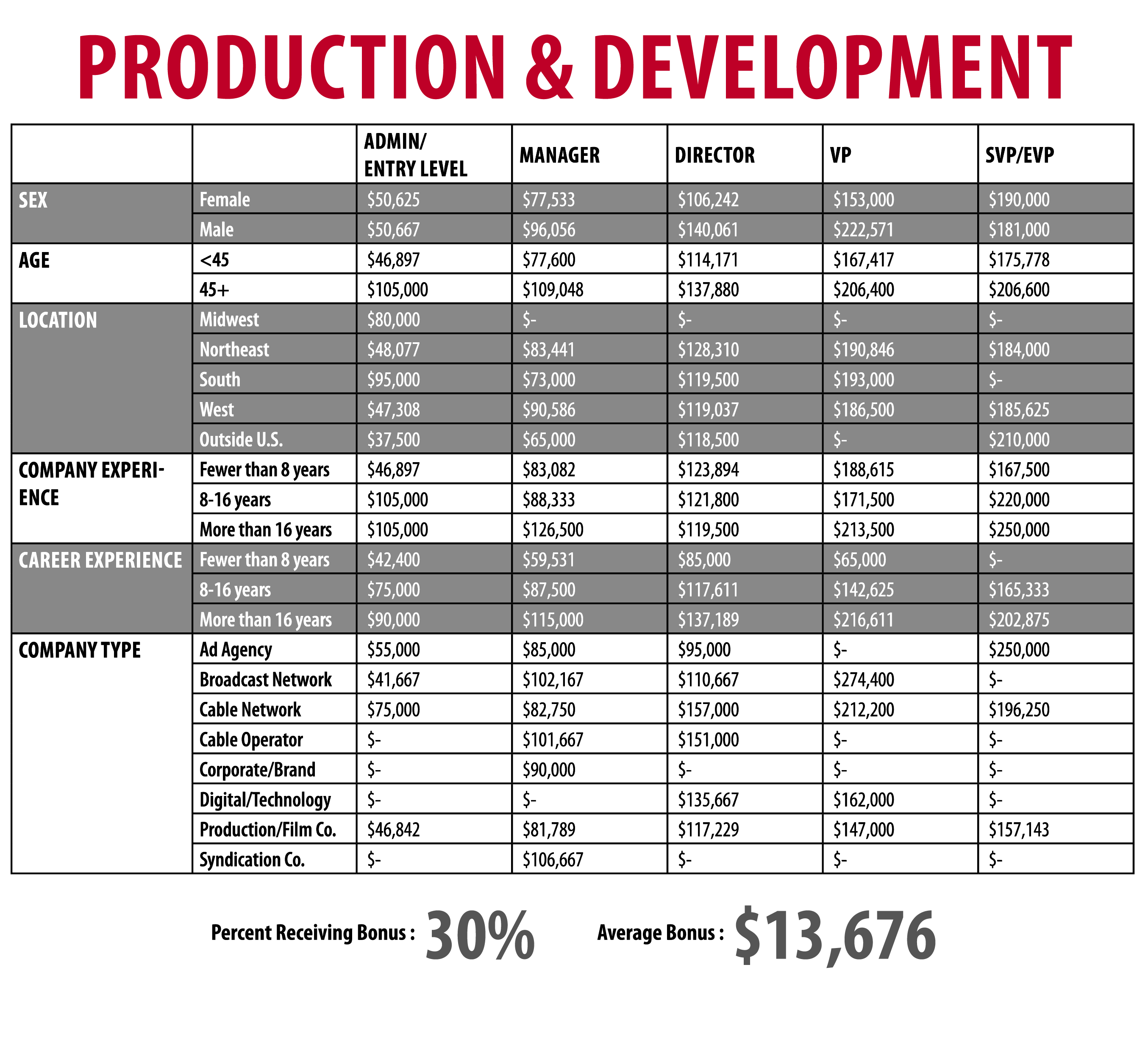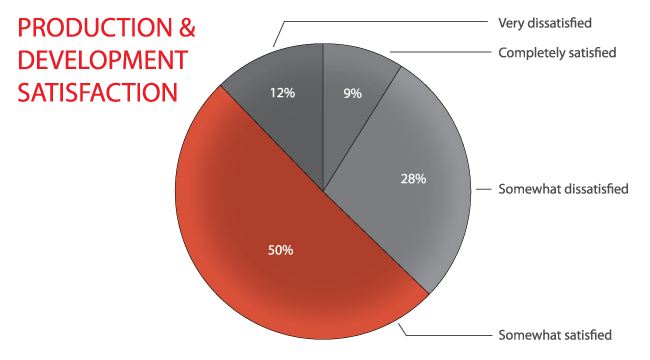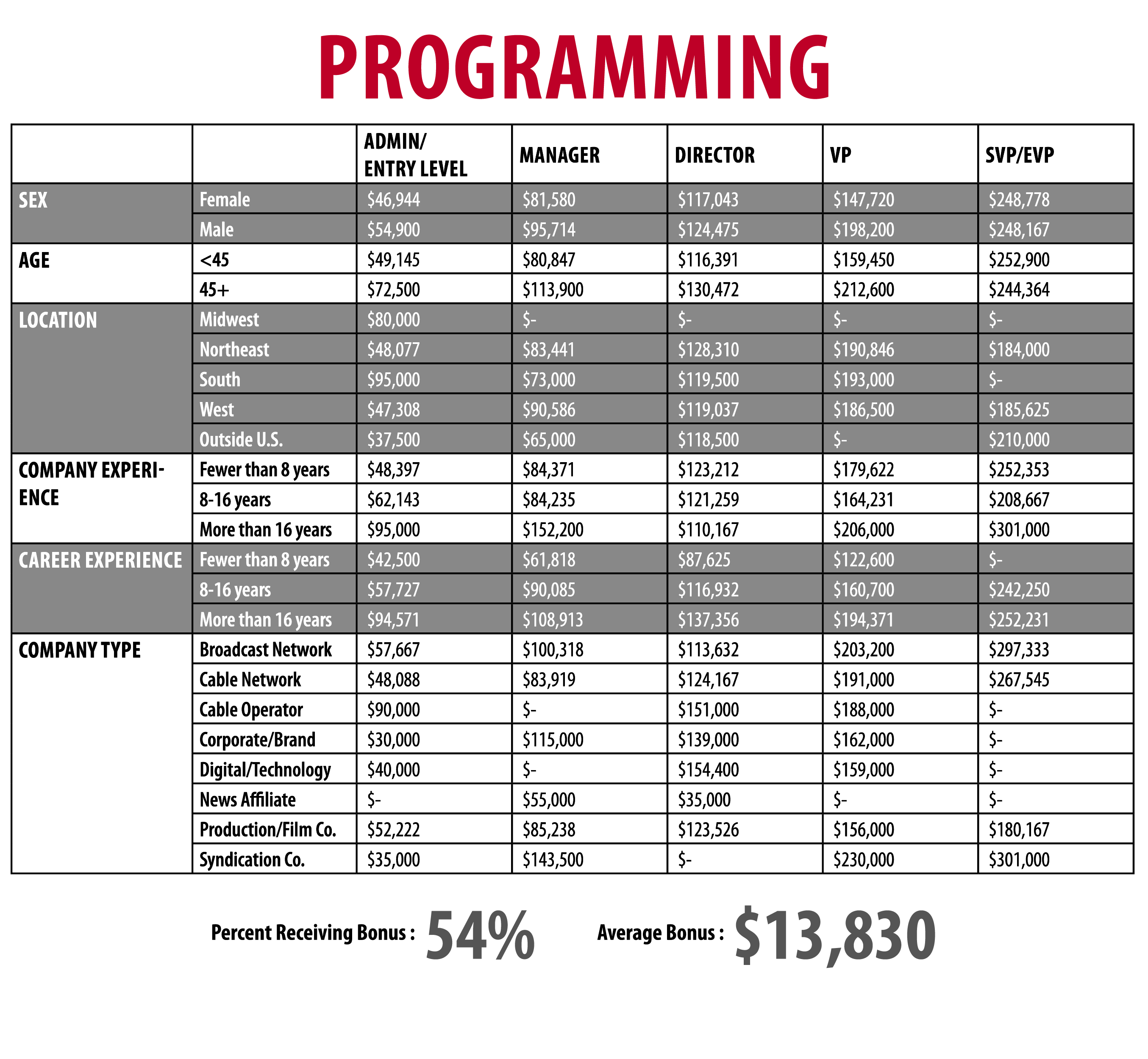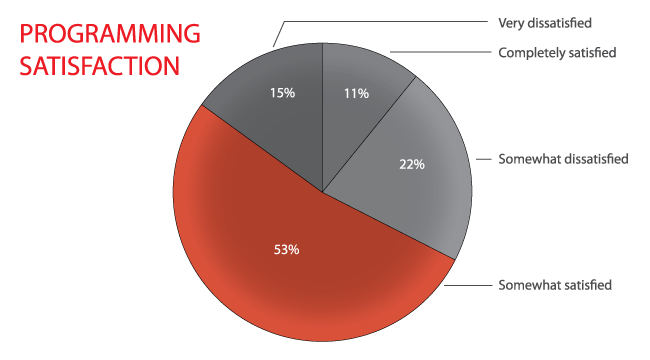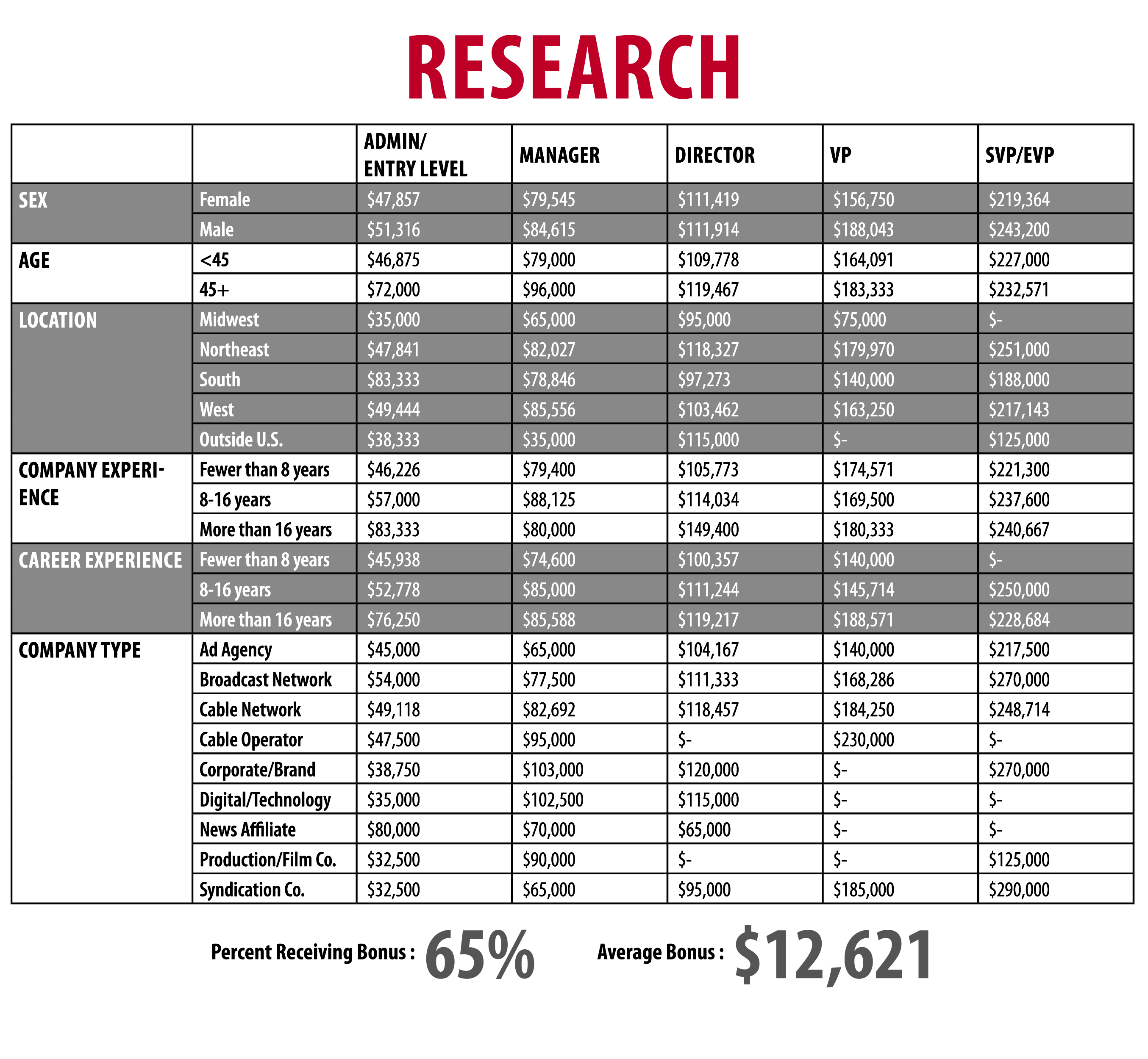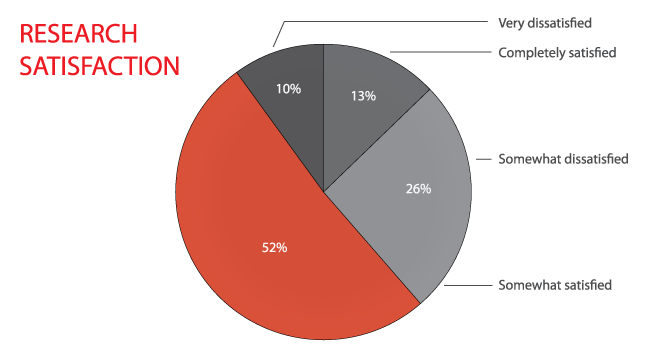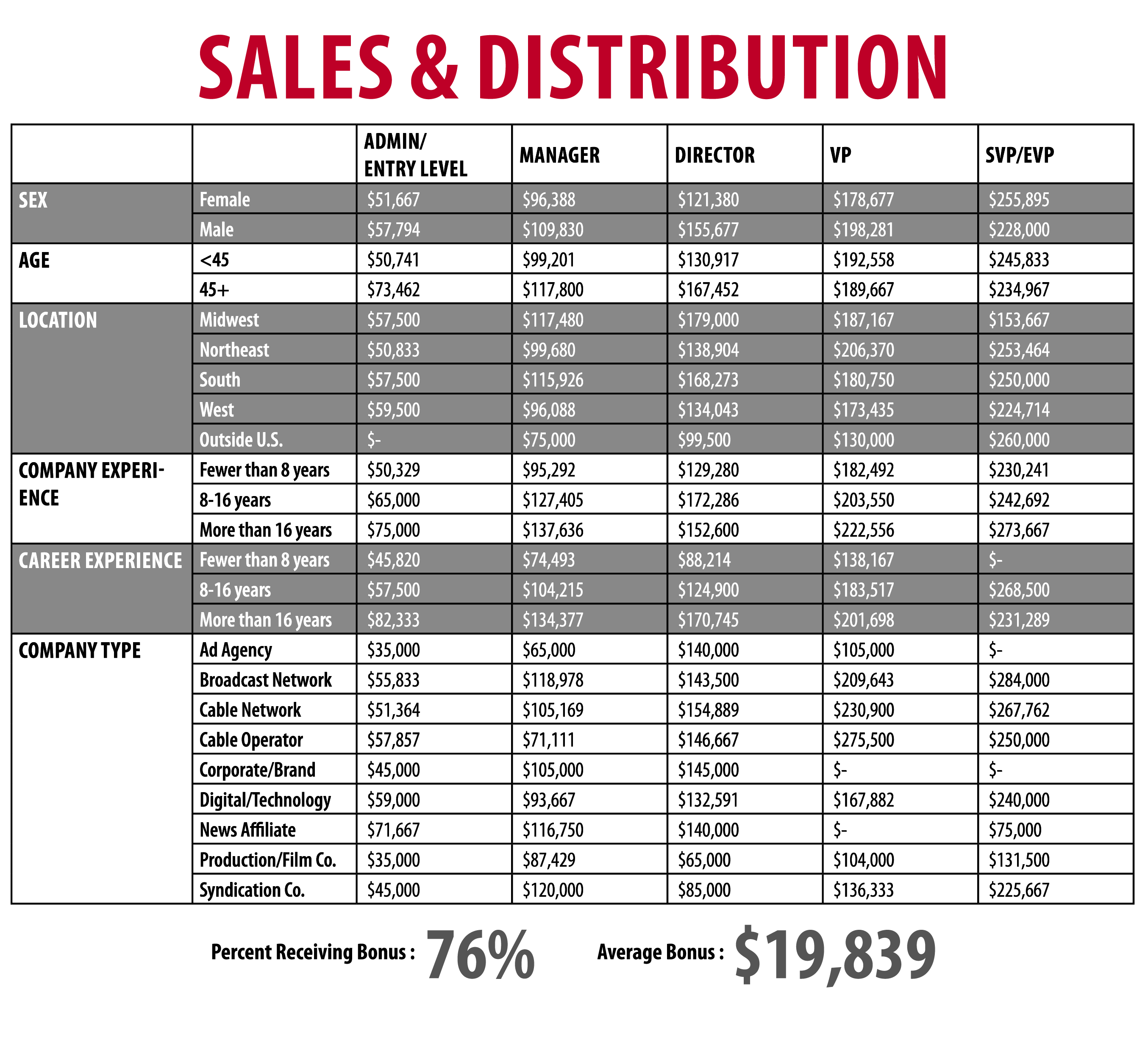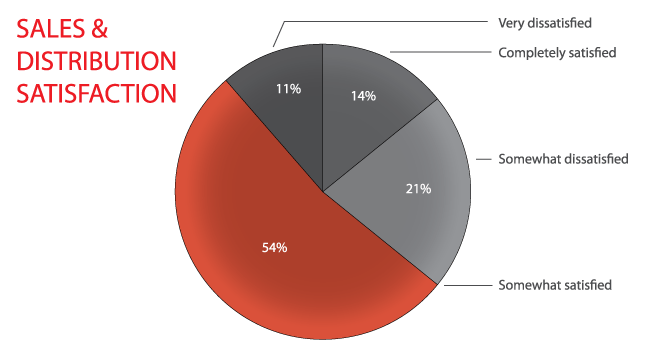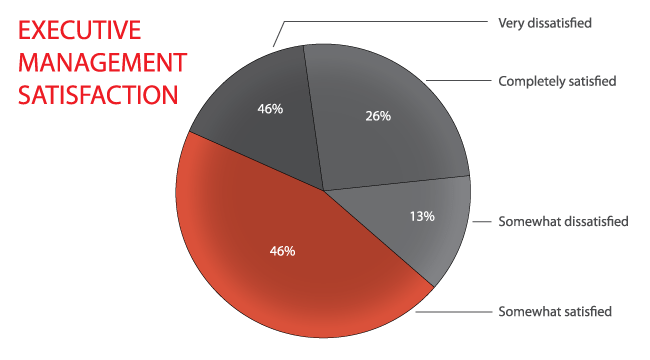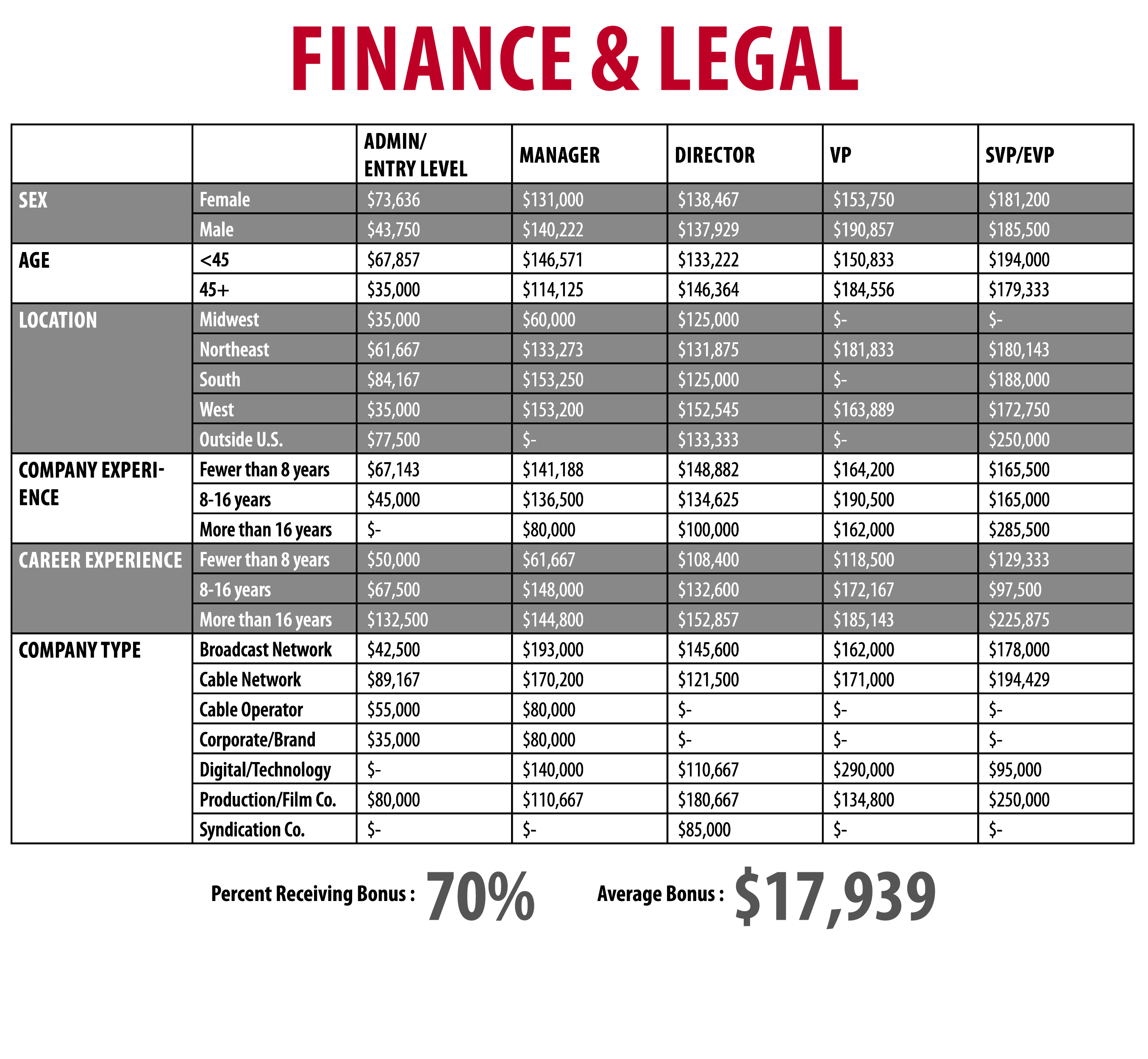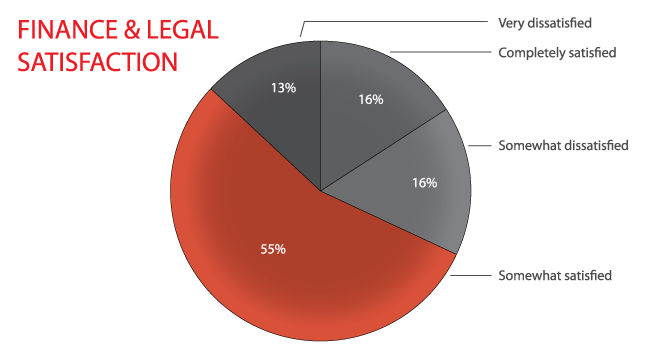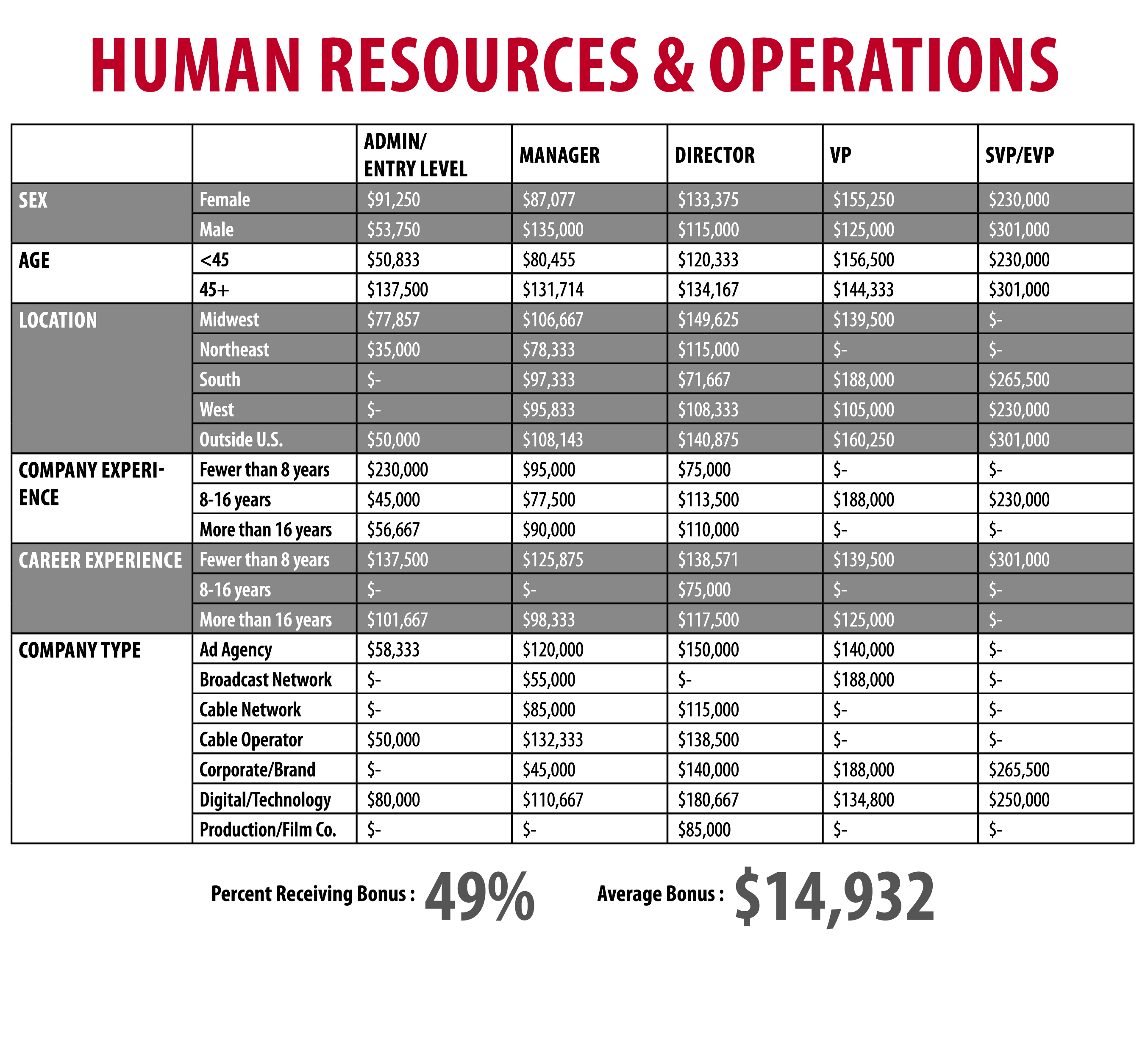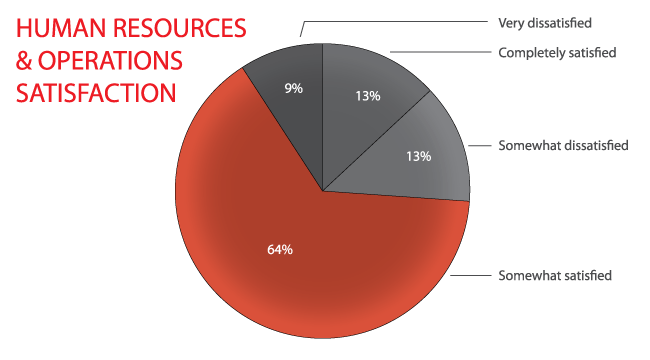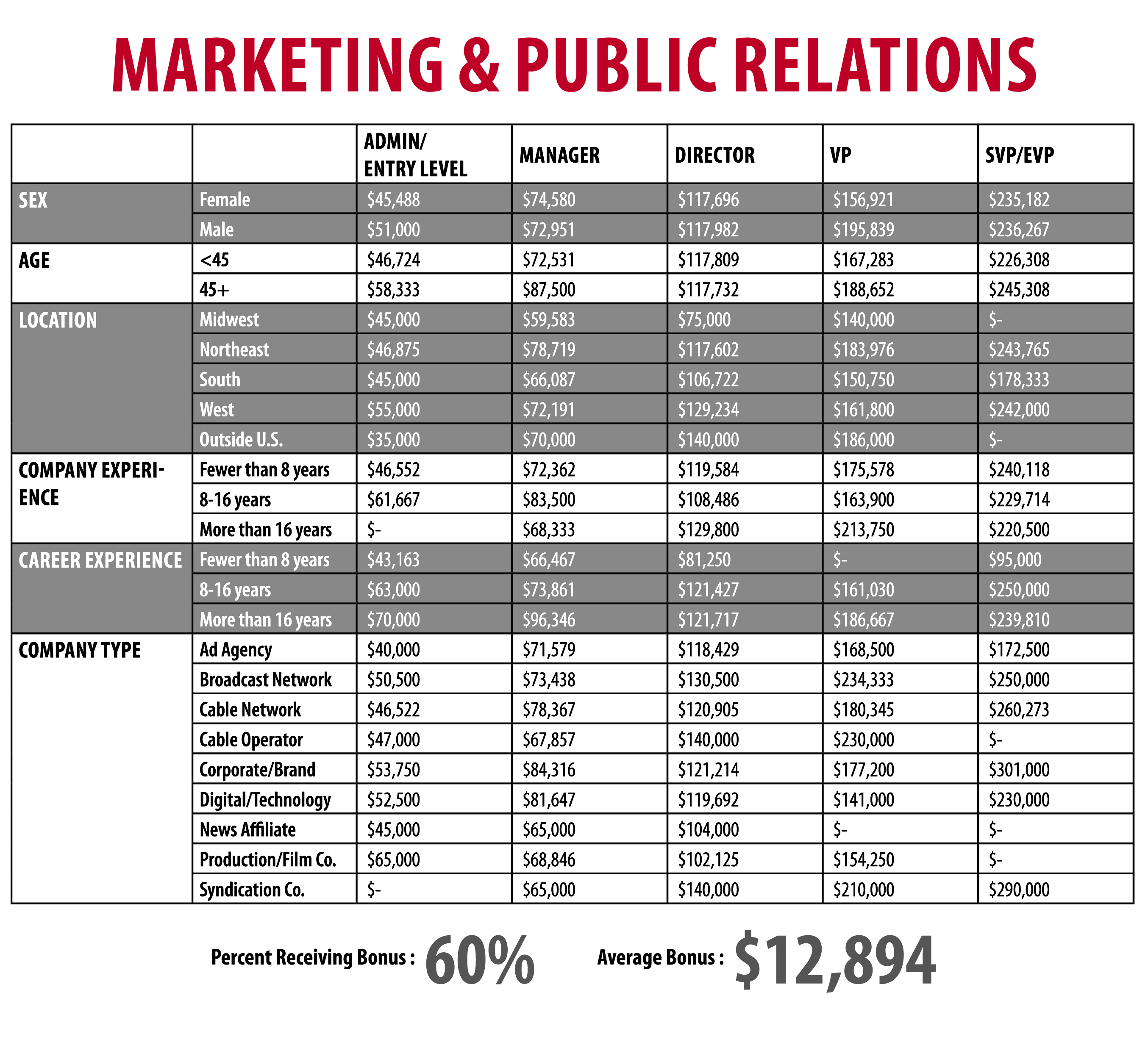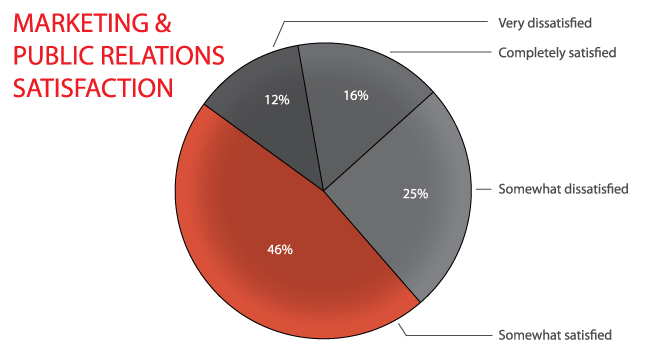
The 2014 Cynopsis Salary Survey

By Michael Rondon
We asked you, our subscribers, to tell us about life at work when it comes to wages, perks and job satisfaction – and you all had a lot to say. With more than 3,100 respondents, our first comprehensive salary survey examined eight major factors—both personal traits, like gender, and the characteristics of employers, like company size—that contribute to compensation across six distinct job levels—from entry level all the way up to CEO. Bonuses are factored in too, as well as overall satisfaction with pay.
One topline finding? If you’re looking for a raise, your best bet is to wait. Factors like age and experience can mean differences in pay of up to 60 percent, or almost $100,000, in the television industry.
Compensation isn’t all about money, though. Perks like flexibility and company-sponsored programs can make up for thousands in salary.
Maternity leave is the most common “soft” benefit reported in the survey, followed by flexible work schedules, paternity leave and volunteer programs. Extras like childcare and time off for the care of elders are rare though. One-fifth of respondents to the survey don’t get any soft bennies at all.
While the vast majority reported having access to two or three of these “soft” benefits, you shouldn’t feel bad if you’re missing out on the rest. Just three lucky respondents say they get them all.
Here are the results of our assessment and analysis.
METHODOLOGY
Cynopsis collected data from July 9-17, 2014 via an online survey emailed to subscribers and distributed through social media. The survey closed for tabulation with 3,160 responses. The margin for error is +/- 2.53 percentage points at the 99 percent confidence level.
BUYING & PLANNING
Gender is usually one of the most significant factors in pay, and while it certainly plays a role for those who work in buying and planning, its impact is less than it is elsewhere in the television industry. Female respondents earn about 16 percent less than their male counterparts—6 percent better than the industry norm.
Age follows suit. Overall, older staffers make 25 percent more than younger colleagues. That’s well below the industry average of 34 percent, but the trend reverses at the highest levels of buying and planning departments. VPs, SVPs and EVPs under age 45 were the top earners.
As always, employers play a big role too. Corporate and brand firms pay the most, by far, trailed by digital and tech outfits and cable operators. Ad agencies are on the opposite end of the spectrum.
A little less than half of staffers in buying and planning departments received bonuses last year, with the average coming in at almost $8,400. There was a big gap between what admin and entry level employees and managers received (each around $4,500), and what their bosses got though ($15,700).
Overall, buying and planning departments are content with compensation. More than 60 percent of the group reports being “somewhat satisfied” or “completely satisfied” with their pay.
PRODUCTION & DEVELOPMENT
Tenure and career experience matter most in production and development departments when it comes to salary. Respondents who’ve been with a company for more than 16 years report making 26 percent more than colleagues who’ve been there for 8-16 years, and 43 percent more than those who’ve had stays shorter than 8 years. The gap is well-above industry norms at the highest levels of the departments. SVPs and EVPs with the longest tenures earned 33 percent more than those with less time served, while the industry average is just 7 percent.
Similarly, career experience played a big role. There was a 62-percent gap in pay between those with the most experience and those with the least.
Bonuses are rare for production and development staff. Just 30 percent—half of the industry average—received one last year. The lack of bonuses at the lower levels is especially notable. Only 13 percent of admin and entry level employees got one, while industry norms are almost than three times that. Amounts were also slightly lower than averages across the board.
With satisfaction around 60 percent, production and development staffers were in line with the rest of the industry, overall. Here again though, employees near the bottom of the corporate ladder were below the norm. “Somewhat satisfied” and “somewhat dissatisfied” received almost the same number of responses from admin and entry level staffers. And not one says they’re “completely satisfied” with pay.
PROGRAMMING
Company type is critical in determining salary for those in programming. There’s a 72-percent gap between syndication companies on the high-end and news affiliates on the low end. There’s even a 21-percent disparity between what syndication companies and the next-highest-paying company type, cable operators, pay for those in programming.
While it matters what type of company programming staffers work for, it doesn’t really matter how big it is or how long they’ve been there. Mid-sized companies with 101-1000 employees pay the best, but it’s usually a difference of less than 15 percent.
Similarly, those with more than 16 years at a given firm earn more than newer colleagues, but the percentage gap is typically in the mid- to low-teens.
Bonuses for those in programming departments fell just shy of industry norms. About 54 percent of respondents reported receiving one last year, with an average amount of $13,800. Interestingly, programming managers fell well below the standard in terms of the percentage getting a bonus, but the amounts were almost double what managers in other departments were given.
Satisfaction with pay was among the highest of any department. Nearly three-quarters of respondents say they’re “satisfied” with their compensation.
RESEARCH
Location, location, location—it matters for pay in research departments. There’s a 43-percent disparity between the highest- and lowest-paying regions, which is close to double the industry norm. Per usual, the Northeast and West are clumped together at the top of the salary spectrum with reported average salaries of about $112,000. Domestically, the Midwest ranks as the lowest-paying area, though researchers outside the U.S. earn even less.
Time spent at a specific company also takes on greater significance in research departments than in other parts of the television world. A 41-percent gap between the most- and least-tenured staffers is well above what you’d find in other departments, though the differences reduced to single digits at the highest levels of research.
Age plays a role, as well. Staffers age 45 and up made about 40 percent more than younger colleagues.
The number of researchers receiving bonuses last year was consistent with industry averages at 65 percent, but the amount they got was markedly lower. While the average difference was about $2,000, those in managerial and directorial positions got bonuses that were closer to $4,000 off of industry norms.
Satisfaction was generally in line with averages for the survey: 65 percent of respondents say they’re “satisfied” with compensation. Lower-level employees indicated they’re slightly less content overall, though. Respondents in admin and entry level positions were split evenly on how they feel about their pay.
SALES & DISTRIBUTION
Overall, gender and age pay disparities hold close to industry averages in sales and distribution departments, but there are stark differences based on job level.
Sex, typically accounting for a 22-percent gap in pay, shows a similar pattern at the admin and entry level, manager, director and VP positions, but reverses at the SVP and EVP level where women out-earn men by 12 percent.
Age follows the same path. The average disparity between staffers above and below age 45 in sales and distribution is 30 percent, but younger VPs, SVPs and EVPs actually make slightly more than their older colleagues.
Those working in sales and distribution departments received more bonuses and averaged higher amounts than any other department. More than three-quarters of respondents got one last year for an average of $19,900—well above the industry norms of 59 percent and $14,600. Bonuses were especially ubiquitous at the top levels: 92 percent of those in SVP or EVP roles got one.
Compensation satisfaction is slightly above other departments around the television business, with 68 percent of respondents saying they’re “satisfied” with their pay. While satisfaction with pay generally increases as you get higher up the corporate ladder, interestingly, responses are fairly consistent regardless of job level in sales and distribution.
EXECUTIVE MANAGEMENT
Factors related to time—age, tenure and experience—don’t matter much when it comes to pay for C-level executives and presidents of television media companies.
Execs ages 45 or older make just 20 percent more than younger colleagues in similar roles. That’s a difference of about $30,000, and nearly half the gap seen elsewhere in the industry.
The same goes for time served at a single company. Those with fewer than 8 years make only 14 percent less than execs who’ve been on the payroll for 16 years or more. The average disparity in other departments is 32 percent.
Career experience follows suit. The 44-percent gap between the most- and least-experienced executives is well below industry norms. Interestingly, almost all of the gap comes at the 16-year mark though. There’s virtually no difference between pay for those with fewer than 8 years and those with 8-16 years of experience.
While bonus amounts were high, averaging about $22,400, the percentage of executives claiming to have received them was low—just 42 percent say they got one last year. Only admin and entry level employees received fewer bonuses.
Satisfaction with pay is well above industry norms however. Close to three-quarters of the executive respondents are “satisfied” with their compensation, including 26 percent that say they’re “completely satisfied”—double what respondents at any other job level reported.
FINANCE & LEGAL
Career experience is critical for those in finance and legal departments (when it comes to their salaries, at least). Newbies earn half of what their most experienced colleagues do, with the pattern holding at every level.
The business also rewards those who put in long hours. Respondents working more than 45 hours per week report making 34 percent more than those who fall below that threshold. That difference shrinks going up the chain of command, but the gap is as high as 51 percent for admin and entry level staffers.
Despite the benefits of logging time from career and day-to-day perspectives, it doesn’t really matter how long you’ve been with a specific company. Those with fewer than 8 years of service to an employer actually out-earn their longest-tenured colleagues by close to $2,000.
Overall, 70 percent of respondents in finance and legal departments report getting a bonus last year—well above the industry norm at every level. The same goes for the average amount—staffers in finance and legal received almost $3,500 more than those in similar positions around the industry.
Those big bonuses didn’t change their feelings about how they’re compensated though. A third of admin and entry level employees say they’re “very dissatisfied” with how much they’re being paid.
HUMAN RESOURCES & OPERATIONS
The traditional gender gap in pay—about 22 percent across the industry—is almost non-existent in human resources and operations departments – in fact, we received nearly twice as many responses from women as from men in this category. Salaries are within 4 percent, overall, with women actually earning more than men in three out of the five job levels.
Tenure—typically an even more impactful differentiator than sex—also barely plays a role. In fact, human resources and operations departments seem to reward job movement. Those with shorter stays at a given company report making 6 percent more than those who’ve been there the longest.
So, what does matter? The type of company you work for.
The disparity between average salaries on the high-end—production and film companies—and low-end—ad agencies—was 59 percent. That’s well above the industry norm and can account for a difference of more than $100,000.
Bonuses are a mixed bag. Just 49 percent of respondents say they got one last year—about 10 percent below the industry average—but the amount, almost $15,000, was slightly higher than the mean bonus for employees in other departments.
Most staffers in human resources and operations are pretty happy with their pay. Almost 80 percent of them say they’re “satisfied”—one of the highest ratings for any department.
MARKETING & PUBLIC RELATIONS
Salaries in marketing and public relations departments are right in line with industry averages for almost every personal factor—sex, age, hours worked, tenure and experience—but company dynamics—location, type and size—are a different story.
There’s a 40-percent gap between the highest-paying regions (Northeast and West) and the lowest (Midwest and South), accounting for differences of up to $40,000. Those working outside the U.S. tend to earn right in the middle, at $88,000.
Company type is also a significant determinant of pay in certain cases. Syndication companies are an outlier as the top earners, with average salaries 23 percent higher than the next highest category, cable networks.
Company size is usually one of the least influential factors in salary, but it had an impact in marketing and public relations departments. Firms with 401-1,000 employees pay the best—18-percent more than the smallest outfits.
As a group, marketing and public relations staffers got about as many bonuses last year as most other departments did, with 60 percent of respondents receiving one. The mean amount, $12,900, was almost $2,000 below what their colleagues received though.
Satisfaction was also consistent with industry averages. About two-thirds of the group say they’re “satisfied” with how they’re being compensated.
